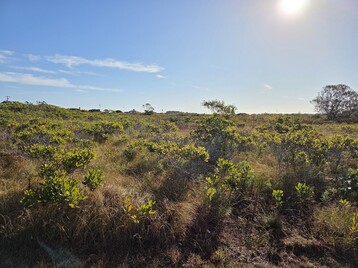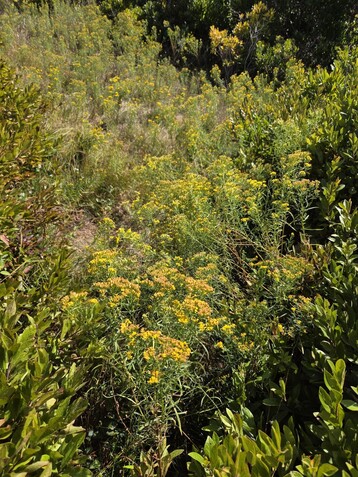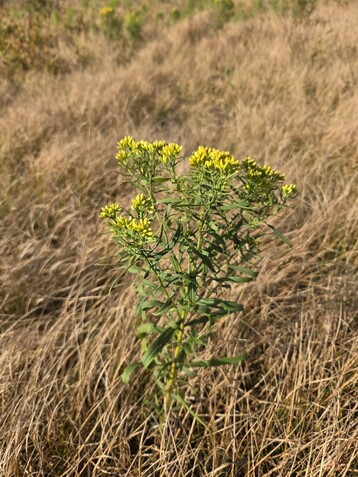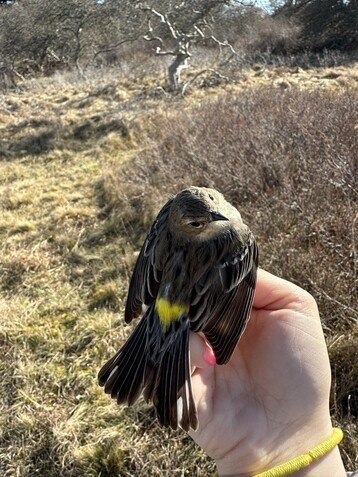Current Nature: Golden Hour
Saliha Nazir, Conservation Research and Stewardship Fellow at the Linda Loring Nature Foundation •

With the Island Fair and Autumnal Equinox officially behind us, it’s safe to say fall is here. Autumn brings a palette like no other. Burnt oranges, subtle pinks, and deep reds paint the landscape, but the color that stands out most is gold. From muted ochres to bright yellow, nature’s brilliance is on full display.
The most abundant source of yellow in the Nantucket fall landscape comes from the turning leaves of shrubs, trees, and vines. As you pass Black Cherry shrubs on your favorite trail, the American Elm and Silver Maple trees downtown, or the native grape vines along the road, take a moment to appreciate the colors. The pigments responsible for the colors you see are called carotenoids. Whenever you look at daffodils in spring, what you are seeing are carotenoids. These pigments don’t just suddenly appear in fall. In fact, they have been there all along. They have just been overshadowed by chlorophyll, the green pigment vital for photosynthesis. With the growing season winding down and chlorophyll breaking down, the yellow pigments have a chance to shine.

The most striking yellows this time of year come from goldenrod, a bright daisy-like wildflower. Goldenrod comes in a variety of species, with Seaside Goldenrod being a favorite on Nantucket. These plants make important food sources for pollinators in the late season. However, they are also important long after they have finished flowering. Once their flowers have been pollinated and go to seed, the seeds make a good late-season food source for many animals, including birds. You may see chickadees or now-drab goldfinches hanging from drooping goldenrods, picking away at the seeds.

Another sign it’s officially fall is the arrival and departure of our fall migrants, the warblers. These charming little songbirds are known for their beautiful plumage, often featuring patches of yellow. Some are even named for the placement of their striking patches. The Common Yellowthroat, which spends its breeding season on Nantucket, appears as a masked bandit with a yellow bib. The Golden-winged Warbler, sadly in decline throughout much of its range and not as common, has a badger-like appearance and sports a yellow patch on—you guessed right—its wing. The Yellow-rumped Warbler, affectionately known as “butterbutt” among birders, arrives later in the season and may spend winter on the island. These birds are a delight to look for and rewarding to see.

Be it in the form of tiny, brilliant flowers close to the ground, a dash of yellow on a songbird flitting among the shrubs, or the sunlight breaking through the fog on a cool autumn morning, gold is all around us. Whether you are walking around downtown, relaxing at the beach, or hiking on one of the island’s many trails, I hope you take a moment to appreciate the many golden hues nature has to offer this time of year.
Stay tuned for more editions of Current Nature, a bi-weekly column featuring seasonal topics, natural history information, and advice on the outdoors from the staff at the Linda Loring Nature Foundation.